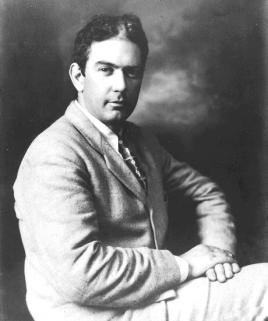Alexander Calder (Alexander Calder)

Artist. A prolific sculptor, he is best known for inventing the kinetic sculptures called mobiles. The first American abstract sculptor to achieve international acclaim, he is considered one of the great pioneers of his time. Born in Lawnton, Pennsylvania (now part of Philadelphia) into a family of artists, both his father Alexander Stirling Calder and grandfather (lexander Milne Calder were well-known sculptors, and his mother was a painter. Called “Sandy” as a child, he was more interested in mechanics and engineering than art. After graduating high school he attended the Stevens Institute of Technology in Hoboken, New Jersey, receiving his mechanical engineering degree in 1919. He tried his hand at a few conventional engineering jobs, but soon his creative energies turned toward art and he enrolled in the Art Student’s League in New York City, New York. Working as a freelance illustrator to support himself, Calder began to paint and sculpt. Soon after having his first one man show in New York in 1926, he left for Paris, France. There he concentrated on small three-dimensional sculptures made from wire, wood, and cloth. Influenced by surrealist painter Joan Miró and the modernist painter Piet Mondrian, his works became more and more abstract, culminating as sculptures with painted elements that moved mechanically, hanging from one another in a way that allowed them to move with the air. Following the suggestion of avant-garde French artist Marcel Duchamp, he called these free-moving, hanging sculptures “mobiles” (a pun on the French for “to move” and “motive”). He also designed “stabiles,” sculptures that stood on the ground upon which a mobile balanced. These new sculptures, arranged by the chance operations of the wind, went against everything that was accepted about the art of sculpture up to that time. In his early thirties he had found a project he would continue for the rest of his life with his new and unique form of art. In 1933, Calder moved to Roxbury, Connecticut. Working on hundreds of small mobiles, he became interested in making large, more substantial works as well. Using similar colorful abstract forms, he made giant metal structures whose shapes and colors stood out in both rural and urban settings. Known as “stabiles,” these works often had a similar quality to the smaller kinetic pieces. By the time of his first major show at the Museum of Modern Art in New York City in 1943, Calder’s quiet revolution was known internationally. Throughout the 1940s and 1950s he was commissioned to create site specific “stabiles” and had major retrospective shows in a number of cities including Amsterdam, Holland, Berne, Switzerland, and Rio de Janiero, Brazil. By 1970, Calder had reached the height of his fame. He had worked regularly creating over 16,000 objects—everything from jewelry to children’s toys to major monuments for the Lincoln Center in New York and UNESCO in Paris. That same year he was honored with shows at the Guggenheim Museum and the Museum of Modern Art. He died in New York City in 1976, shortly after the opening of another major retrospective show at the Whitney Museum. (bio by: Edward Parsons) Family links: Parents: Alexander Stirling Calder (1870 – 1945) Nanette Lederer Calder (1866 – 1960) Sibling: Margaret Calder Hayes (1896 – 1988)* Alexander Calder (1898 – 1976) *Calculated relationship
Born
- July, 22, 1898
- USA
Died
- November, 11, 1976
- USA

